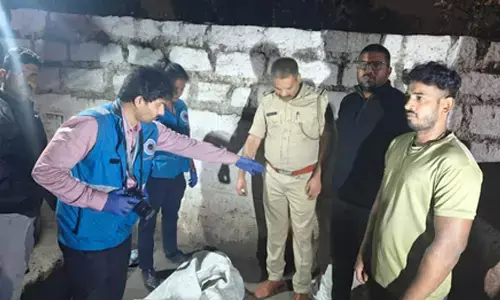Hit with a truck: How Iran's missiles inflicted brain injury on US troops

In the wee hours of January 8, Tehran retaliated over the US killing of Iran’s most powerful general by bombarding the al-Asad air base in Iraq.
In the wee hours of January 8, Tehran retaliated over the US killing of Iran's most powerful general by bombarding the al-Asad air base in Iraq. Among the 2,000 troops stationed there was US Army Specialist Kimo Keltz, who recalls hearing a missile whistling through the sky as he lay on the deck of a guard tower. The explosion lifted his body - in full armour - an inch or two off the floor.
Keltz says he thought he had escaped with little more than a mild headache. Initial assessments around the base found no serious injuries or deaths from the attack. US President Donald Trump tweeted, "All is well!" The next day was different. "My head kinda felt like I got hit with a truck," Keltz said in an interview from al-Asad air base in Iraq's western Anbar desert. "My stomach was grinding."
Keltz, who said he had concussion symptoms for days, is among 109 soldiers diagnosed with traumatic brain injuries in the wake of last month's attack, a figure that has steadily risen as more troops report symptoms and get medical screening.
The slowly rising casualty count underscores the difficulty in detecting and treating what has become one of the most common injuries in the US military during two decades of war in Afghanistan and Iraq, where US troops face roadside bombs, rockets and mortars.
More than a week after the attack, on Jan. 16, Defense Secretary Mark Esper was made aware that soldiers had suffered brain injuries from the missiles, the Pentagon said. That day, the Pentagon reported that an unspecified number of troops were treated for concussive symptoms and 11 were flown to Kuwait and Germany for higher-level care.
On January 22, Trump said that he "heard that they had headaches and a couple of other things," prompting criticism from both Democratic and Republican lawmakers and a US veterans' group that the president was underplaying the casualties from the attack.
"I think it was unfortunate to use those words," said Republican Representative Richard Hudson, who represents Fayetteville, North Carolina, home to Fort Bragg that includes the Army's Special Operations Command.
The US military has long treated brain injuries as a different class of wounds that do not require rapid reporting up the chain of command, unlike incidents threatening life, limb or eyesight.
Since 2000, nearly 4,14,000 service members have been diagnosed with traumatic brain injuries, or TBIs, according to Pentagon data. The number is likely higher because the Pentagon only counts as one injury cases where a soldier suffers brain trauma in multiple incidents.
"Those drone pilots, they're the ones that took the brunt of the TBI cases," said Garland, who as commander of Task Force Jazeera oversees more than 400 soldiers.
The number of troops diagnosed with brain injury from last month's attack was expected to stabilise near the current count, one US official said. Less than 10 were now being monitored with possible TBI symptoms, the official said.
The total US military count, however, excludes civilian contractors on the base at the time, many of whom have since departed.
Some US troops also suffered from anxiety-related symptoms after the attack, including sleeplessness and, in at least one case, a sustained high heart rate, according to interviews with soldiers and officials. However, they could not provide a specific number.
As the Iranian missiles streaked through the night sky toward the base, their engines glowed orange - like the ends of lit cigarettes, Garland said. The glow was all that Garland could see in the darkness before scrambling back into a bunker. Then came the blasts. At least eleven missiles struck the base, destroying housing units made from shipping containers and other facilities.
But initial checks after the attack showed nobody was killed or obviously injured, despite massive devastation to the base. Word got back to Washington. Just before 6 a.m. in Baghdad, Trump tweeted an update: "Assessment of casualties & damages taking place now.
So far, so good!"
Injury figures kept climbing in the weeks after the attack. What began as at least 11 cases grew to 34 about a week later. On January 22, Trump made his controversial comment, referring to the injuries as "headaches." The Veterans of Foreign Wars demanded an apology for Trump's "misguided remarks". A week later, on January 28, the toll of brain injuries climbed to 50. In early February, a news agency reported that the count had surpassed 100.
Marilyn Kraus, Director of the Traumatic Brain Injury programme and concussion clinic at George Washington University, said troops may minimize or underreport their symptoms initially. Others may not show symptoms until much later in part because their injuries are initially masked by the adrenaline rush that comes with combat.
"Some of these things can fall into the cracks initially," said Kraus, who previously served as medical director of the Traumatic Brain Injury Consult Section at the Walter Reed military hospital in Bethesda, Maryland.
Hales, the Army doctor, cited research within the past six months showing in animal models that signs of damage to the brain can increase in the weeks after a blast. At al-Asad, soldiers started showing symptoms such as headaches or a "foggy feeling" days after the attack, Hales said. The symptoms often persisted.
"That's the reason why you saw a huge delay" in identifying the injuries, he said. "That prompted us to re-screen pretty much the whole population of al-Asad."
















